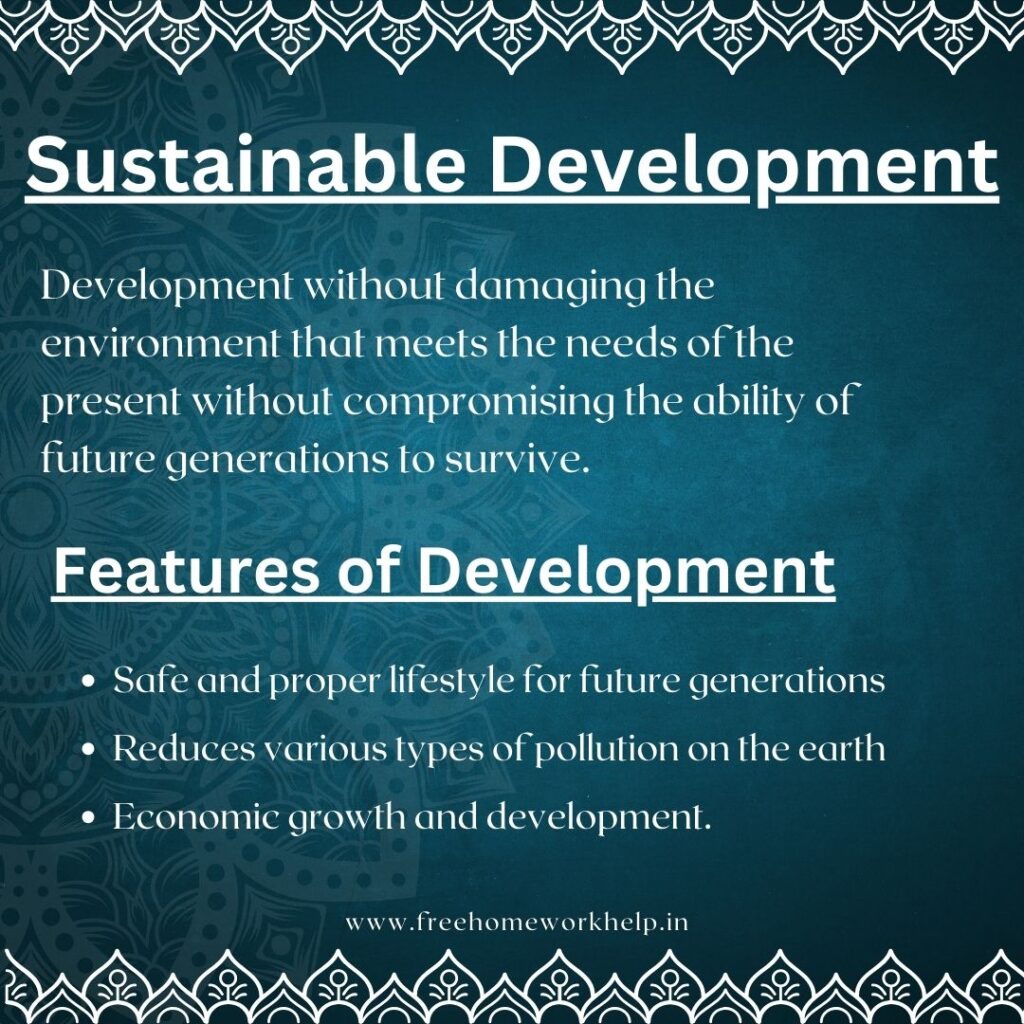In Chapter 1 Development Class 10 Economics, we will study the basic development concept. We will learn what development is. Is it the same for everyone? How do we compare development? How do we measure it? What is the meaning of sustainable development? etc. The answers to these questions are found in economics, history and political science. This is because the way we live today is influenced by the past. In higher classes, we study this concept in great depth.
Let us look at the topics discussed in CBSE Notes Class 10 Economics Chapter 1 – Development.
Development Class 10 Notes
What Development Promises – Different People, Different Goals
- Different people may have different goals for development.
- What may be development for one may not be development for another.
- It is not just about individual growth but also the progress of the country.
- Development includes economic growth and meeting basic needs such as education and healthcare.
- It aims to keep pace with changing times.
- For example, building a dam for power generation may benefit society but harm farmers and residents.
Income and Other Goals
- Developmental goals include not only better income but also other important aspects of life.
- People want more income because money, or the things it can buy, is essential for a good life.
- The quality of life depends on non-material aspects such as equal treatment, freedom, security, and respect for others.
- People want regular work, better wages and decent prices for their crops.
- When it comes to development, people consider a mix of goals.
People have mixed goals
- Materialistic Goals: Income & Money
- Non-Materialistic Goals: Respect, Education, Safety
National Development
National development refers to the ability of a nation to improve the standard of living of its citizens. The standard of living of citizens depends on per capita income, GDP, literacy rate, availability of health, etc.
How to Compare Different Countries or States?
When comparing countries, one can see that their income is considered one of the most important characteristics. Countries with high incomes are more developed than other countries with low incomes. Since different countries have different populations. Therefore, we compare the average incomes of the countries. What is the Average Income?
Average income is equal to the total income of a country divided by its total population. It is also called per capita income.
Average Income/per capita income = Total Income of a Country / Total Population of a Country.
Per Capita income is used in classifying countries in the World Development Report.
Income and Other Criteria
People earn more to achieve their goals and want respect from others, security in their life and freedom.
● If we consider the development of the country per capita, Goa is the most developed and Bihar is the least developed state in India.
● Net Attendance Ratio: It is defined as the total number of children above 14 years of age attending school divided by the total percentage of children of the same age group.
● Literacy Rate: It is the total number of people above 7 years of age who can read, write and understand. If the literacy rate is high, the state is considered developed. Kerala has the highest literacy rate of 96.2% and Andhra Pradesh has the lowest literacy rate of 66.4%.
● Infant Mortality Rate: It is the total number of children dying in a year in proportion to 1000 births.
Kerala has the lowest infant mortality rate, i.e. the lowest number of deaths per 1000 live births and Madhya Pradesh has the highest mortality rate, i.e. 48 per 1000 live births in India.
Public Facilities
Public facilities like schools, transport, electricity, hospitals, housing, community halls, etc. play a major role in the development of the country. These facilities are provided by the government.
Sustainability of Development
Sustainable development means development without damaging the environment that meets the needs of the present without compromising the ability of future generations to survive.
To achieve sustainable development, we must use non-renewable resources like carbon-based fuels wisely.

READ ALSO: NCERT Class 10 Geography Chapter 1 Notes | Easy Concept
FAQ
What is ‘per capita income’?
Average income is equal to the total income of a country divided by its total population. It is also called per capita income.
Name the countries having the highest and lowest per capita income in 2023 (US Dollars).
Luxembourg has the highest per capita in the world, at around US$130,000, while Burundi has the lowest.
What are some of the public facilities in India?
Schools, transport, electricity, hospitals, housing, community halls, etc.
What are the advantages of sustainable development?
1. Safe and proper lifestyle for future generations
2. Reduces various types of pollution on the earth
3. Economic growth and development.
Conclusion
I hope the information given above regarding Development Class 10 Economics Chapter 1 Notes has been helpful to you. If you have any other queries about NCERT Development Class 10, feel free to reach us so that we can get to you at the earliest possible.
